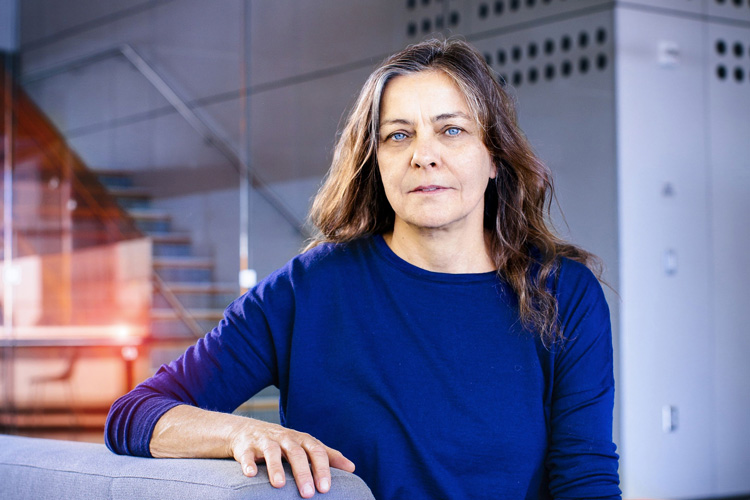Tiny microbes and huge viruses blur line between life and non-life
Jill Banfield will talk about Earth's microbiome on April 30, part of the 106th Martin Meyerson Faculty Research Lectures

April 29, 2019
Jill Banfield has discovered thousands of never-before-seen microbes in dirt, sludge and slime. The more she finds, the more fascinated she becomes by the immense diversity of microbial lifestyles and the narrowing gap between what we think of as living and non-living.
A mineral physicist by training and a gem lover — she is a professor of earth and planetary science and of environmental science, policy and management — Banfield is a pioneer of metagenomics. This relatively recent field of study involves sequencing the DNA in a natural environment and reconstructing from this massive amount of data the genomes of all the organisms living there.
Banfield will discuss her research findings and the issues they raise in a talk, “Mysteries of the Invisible World of Microbes,” on April 30, from 4 to 5 p.m., in Bechtel Engineering Center’s Sibley Auditorium. The free talk is one of two annual Martin Meyerson Faculty Research Lectures, which are hosted by the Berkeley Division of the Academic Senate and have been delivered by Berkeley’s top faculty since 1912, except for the war year 1919. This year’s other faculty research talk, by psychology professor Alison Gopnik, took place March 19.
Banfield has sampled and sequenced microbial communities that range from abandoned gold mines, geysers, toxic waste sites and oil wells to newborn’s poop.
These reconstituted metagenomes have put thousands of previously unknown microbes — bacteria and their cousins, Archaea — on the Tree of Life, making the microbial branches far more bushy and diverse than all the plants and animals we know far better.
In the process, however, she has found that many of the new microbes have extremely tiny genomes, seemingly insufficient to sustain independent life. Instead, they appear to depend on other organisms for the basic building blocks needed for life. The genomes of some bacteria within a group called Candidate Phyla Radiation (CPR) are smaller than the genomes of large viruses, or bacteriophages, which are considered non-living.
“The huge diversity of CPR bacteria that almost certainly rely on other organisms for the vast majority of their building blocks, and phages with huge genomes that have unexpected genes normally only found in cellular life, blur the distinction between ‘life’ and ‘non-life,’” says Banfield, who is also director of microbial research at the Innovative Genomics Institute and a CZ Biohub investigator.
She recently discovered that some of the largest phages can be found in our guts and mouths, preying on gut and saliva microbiomes.
Banfield is a member of the National Academy of Sciences and the Australian Academy of Science and a fellow of the Royal Society, as well as a MacArthur fellow, a L’OREAL-UNESCO Laureate and an elected fellow of the Geochemical Society and the American Academy of Microbiology. She is also affiliated with Lawrence Berkeley National Laboratory and has a position at the University of Melbourne in Australia.